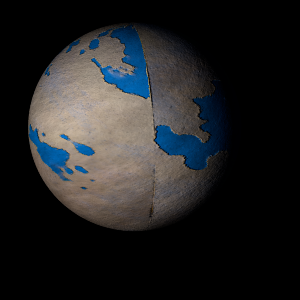|
|
Space Astro
|
Info for exoplanet "Qeqtartar"
| Scientific (actual) data |
|---|
| Planet | EPIC 212737443 b |
| Planet status | Confirmed |
| Planet mass | 0.02907 |
| Radius | 0.231 |
| Orbital period | 13.603 |
| Semi major axis | 0.098 |
| Orbit eccentricity | 0.2 |
| Inclination | 89.071 |
| Discovered | 2019 |
| Updated | 2021-02-08 |
| Tconj | 2457240 |
| Tzero tr | 2457240 |
| Impact parameter | 0.479 |
| Temperature (kelvin) | 536 |
| Publication | Published in a refereed paper |
| Detection type | Primary Transit |
| Mass detection type | Theoretical |
| Radius detection type | Primary Transit |
| Alternate names | 2MASS J13365320-0719053 b, EPIC 212737443.01, K2-310 b, WISE J133653.17-071905.1 b |
| Star name | EPIC 212737443 |
| Right ascension | 204.22° |
| Declination | -7.32° |
| Mag v | 14.8 |
| Mag i | 13.626 |
| Mag j | 12.824 |
| Mag h | 12.239 |
| Star distance | 347.45 |
| Star metallicity | -0.137 |
| Star mass | 0.69 |
| Star radius | 0.67 |
| Star sp type | K3 |
| Star temperature | 4684 |
| Star alternate names | 2MASS J13365320-0719053, K2-310, WISE J133653.17-071905.1 |
| Wikipedia article | EPIC 212737443 b |
Back
| |
| Fictional info (?) |
|---|
| Suggested name | Qeqtartar |
| Planet type | Terrestrial |
| In English, Qeqtartar is often referred to as the "orange planet" because the water prevalent on its surface gives it a strange orange appearance that is unusual among the astronomical bodies visible to the naked eye.
For this reason, scientists often classify Qeqtartar and Arhionn as "terrestrials" to distinguish them from the other planets. It is named after the deity Qeqtartar, the spirit of destruction.
Qeqtartar's dense atmosphere make observation of its surface challenging in infrared light, and the first detailed maps did not emerge until the arrival of the Magellan orbiter 62 years ago.
Optical ground-based telescopes are typically limited to resolving features about 345 kilometers across when Qeqtartar is closest because of Earth's atmosphere.
This unfriendly planet is crowded with strange ultra advanced oceanic creatures that spend their life by eating something called Perkal. The Banher are not related to the Perofari Cli but with wings and vary in size from 60 to 100 mm. They are able to withstand temperatures from 30 to 110°C but are killed by the high radiation level. |
| Estimated population | 70000000 |
| Atmosphere | Methane | 47% |
| Water | 28% |
| Oxygen | 22% |
| Carbon dioxide | 2.3% |
| Atmospheric pressure | 0.0011 bar |
 |
| No known satellites |
| Google search for Qeqtartar |
|
Website by Joachim Michaelis
|
|
|
|